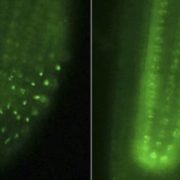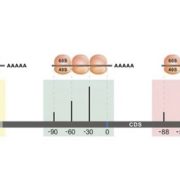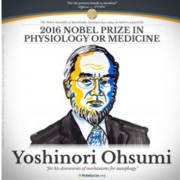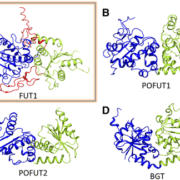
Emerging Technologies in Phenomics Sessions at Phenome 2017
Determining the exact phenotypes of a large population of plants, including architectural parameters, metabolic status, and developmental stage, has traditionally required substantial, expensive labor by legions of workers. While technologies for high-throughput genotyping have mushroomed, technologies…

Metabolic Signaling Regulates Alternative Splicing during Photomorphogenesis
0 Comments
/
IN BRIEF by Kathleen L. Farquharson kfarquharson@aspb.org
Alternative splicing (AS) regulates gene expression and greatly expands the coding capacity of complex genomes. By regulating which elements of an mRNA transcript are removed or retained, AS produces multiple transcripts from a single gene. Some…

Do Phytochromes and Phytochrome-Interacting Factors Need to Interact?
IN BRIEF by Nancy R. Hofmann nhofmann@aspb.org
A new study calls into question whether phytochrome B (phyB) must directly interact with phytochrome-interacting factors (PIFs) to promote light responses. Phytochrome photoreceptors mediate responses to red light in part by inducing the degradation of…

Recognizing featured Plant Cell first authors, November 2016
Recently, we’ve been profiling first authors of Plant Cell papers that are selected for In Brief summaries. Here are the first-author profiles from the October issue of The Plant Cell.
Jaewook Kim, Kijong Song, and Eunae Park, featured authors of Epidermal Phytochrome B Inhibits Hypocotyl Negative…

EDITORIAL: The Plant Cell Begins Opt-in Publishing of Peer Review Reports
As of January 2017, The Plant Cell will offer authors the option of associating a Peer Review Report with each research article. Reviewer anonymity will be strictly maintained. The reports will include the major comments from reviewers and the editors’ decision letters along with the authors’ response…

RNA Degradome Studies Give Insights into Ribosome Dynamics
IN BRIEF by Gregory Bertoni gbertoni@aspb.org
RNA metabolism is key to a number of crucial processes in the cell, including transcription, RNA splicing, translation, and gene regulation. For efficient translation, mature mRNAs must have a 7-methylguanosine cap on the 5′ end to help recruit the translation…

Recognizing featured Plant Cell first authors, October 2016
Recently, we’ve been profiling first authors of Plant Cell papers that are selected for In Brief summaries. Here are the first-author profiles from the October issue of The Plant Cell.
Olivia Wilkins and Christoph Hafemeister, featured first authors of EGRINs (Environmental Gene Regulatory Influence…

Congratulations to Yoshinori Ohsumi
Warmest congratulations to Yoshinori Ohsumi, 2016 Nobel Laureate in Physiology or Medicine, “for his discoveries of mechanisms for autophagy”. Autophagy (self-eating) is a process through which cells selectively degrade and recycle cellular components. Ohsumi’s research has primarily focused…

Another Step Closer to Understanding Plant Cell Wall Biosynthesis: The Crystal Structure of FUCOSYLTRANSFERASE1[
IN BRIEF by Nancy R. Hofmann nhofmann@aspb.org
Plant cell walls consist of cellulose microfibrils embedded in a matrix of polymers including hemicelluloses. As one of the main hemicelluloses in the cell walls of dicots, xyloglucan is an important target of study to understand plant cell walls…

